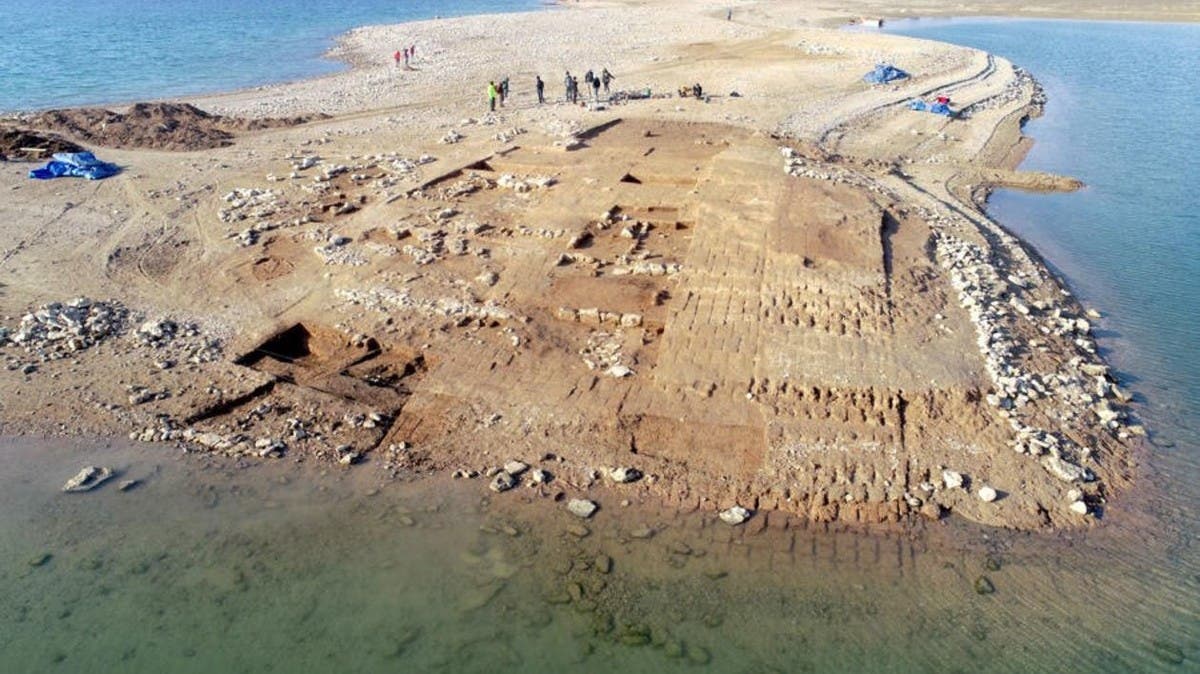Archaeologists have rediscovered the ruins of a 3,400-year-old city in Iraq due to extreme drought brought on by climate change.
German and Kurdish researchers have uncovered the Mittani Empire-era city, once located on the Tigris River. It emerged from the waters of the Mosul reservoir early this year as water levels fell rapidly due to drought in Iraq, the university said in a statement on Tuesday.
For the latest headlines, follow our Google News channel online or via the app.
The archaeologists believe that the ancient city, which includes a palace and several large buildings, might be ancient Zakhiku, which was once an important center in the Empire sometime between 1550 and 1350 BC.
One of the countries most affected by climate change, Iraq has experienced some extreme weather conditions in recent months. The south of the country has also been suffering from extreme drought for months, the University of Tubingen said in a statement.
Since December 2021, large amounts of water from the Mosul reservoir have been used to prevent crops from drying out. This then led to the reappearance of the Bronze Age city which was submerged decades ago without any prior archaeological investigations. The area is located at Kemune in Iraq’s Kurdistan Region.
The unforeseen event has put archaeologists under sudden pressure to excavate and document parts of the once-submerged ancient city as soon as possible before it is resubmerged.
Kurdish archaeologist Dr Hasan Ahmed Qasim, chairman of the Kurdistan Archaeology Organization, and the German archaeologists Dr Ivana Puljiz of the University of Freiburg and Dr Peter Pfälzner of the University of Tübingen spontaneously decided to undertake joint rescue excavations at Kemune. These took place in January and February 2022 in collaboration with the Directorate of Antiquities and Heritage in Duhok (Kurdistan Region of Iraq).
An excavation team was put together and funding for the undertaking was approved within days.
Under immense time pressure, they uncovered several other buildings as well as a massive fortification of walls and towers.
Archaeologists say a large earthquake destroyed the Mittani city around 1350 BC, causing the upper parts of these walls to come crashing down on the buildings within and they believe that this is what helped keep the structures so well-preserved after all these years submerged underwater.
In addition, they also discovered a multi-story storage building and some sort of industrial complex.
“The huge magazine building is of particular importance because enormous quantities of goods must have been stored in it, probably brought from all over the region,” said Puljiz.
“The excavation results show that the site was an important center in the Mittani Empire,” Qasim said.
Inside the ruins, the archaeologists discovered five ceramic jars containing over 100 tablets, written in Cuneiform, an ancient script used by several cultures throughout the Middle Eastern region. These tablets date back to the Middle Assyrian period, just before the earthquake that destroyed the city.
“It is close to a miracle that cuneiform tablets made of unfired clay survived so many decades underwater,” said Pfalzner.
Much of the site was covered in plastic and the buildings with gravel, to prevent them from deteriorating.
The Mosul reservoir is now full again, meaning that the city is underwater again, until the effects of climate change are felt again.
Read more:
Saudi Arabia finds 80-million-year-old fossil, pre-historic rock art in Red Sea area
Egypt displays trove of newly discovered ancient artifacts at Saqqara near Cairo
Egypt awards eight gold, metal mining exploration licenses: Ministry


 World3 years ago
World3 years ago
 World3 years ago
World3 years ago
 Business1 year ago
Business1 year ago
 Entertainment7 years ago
Entertainment7 years ago
 World7 years ago
World7 years ago
 Entertainment7 years ago
Entertainment7 years ago




